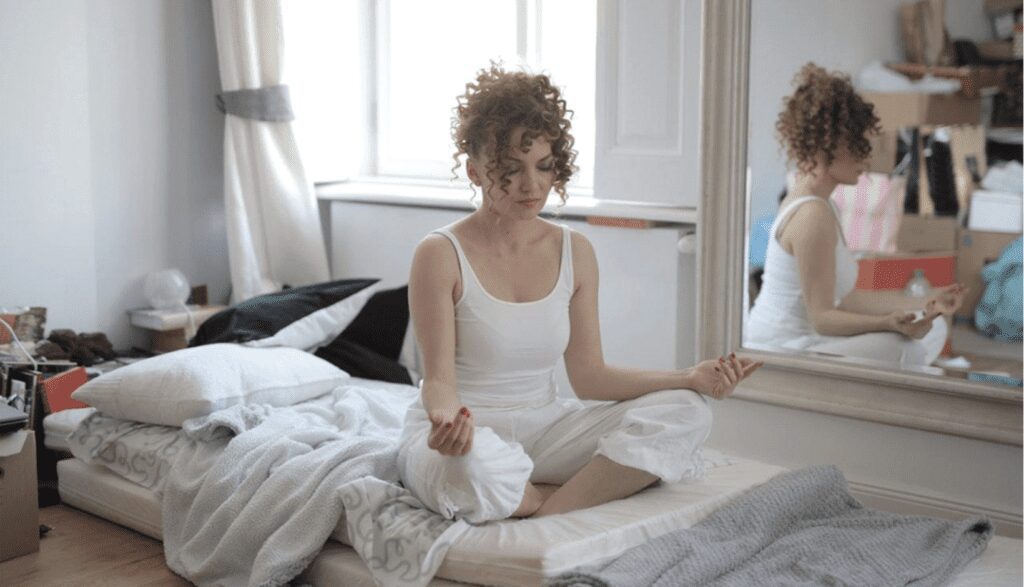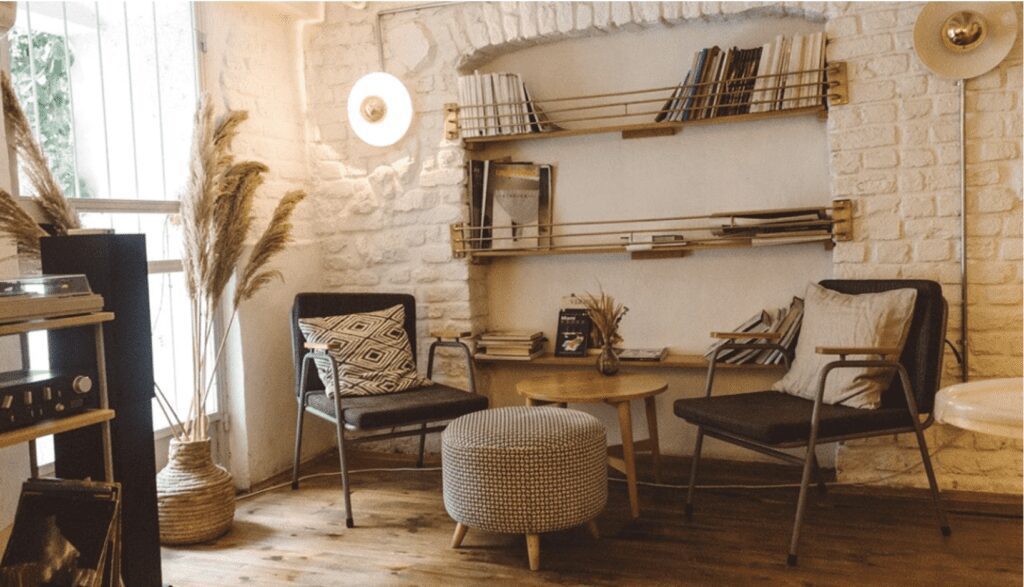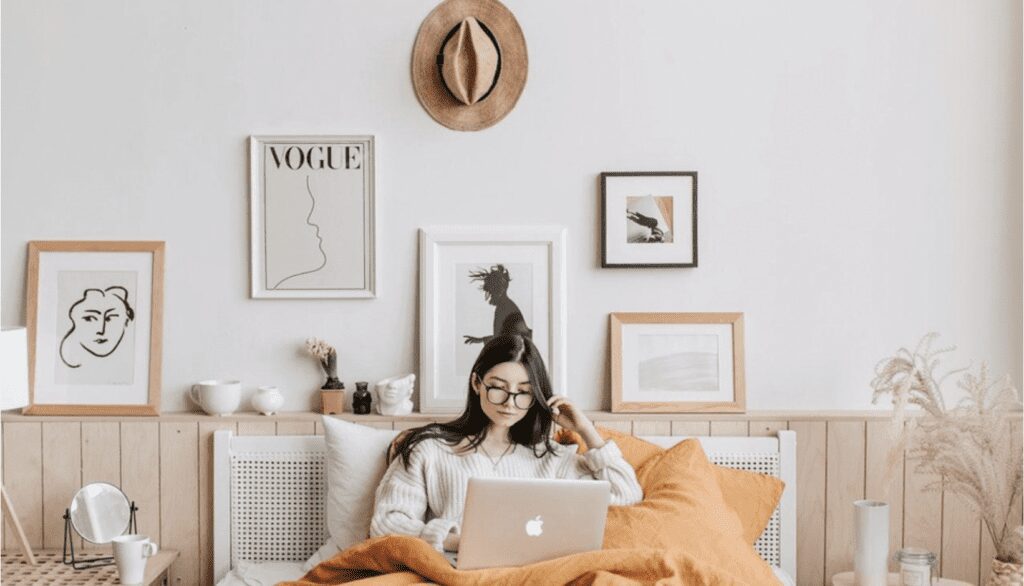The Healthy Home Guide: Wellness in the Home
By: Linda Kafka

Our homes continue to play a pivotal role in our lives as we are spending increasingly more time in our personal space to help combat the spread of COVID-19. At this time, when our homes need to be our safe place, they are also becoming a space where we can often feel suffocated, challenged, stressed, and confined.
Without warning, we needed our homes to double as a classroom, office, gym, entertainment space, and even a restaurant. Our kitchens alone have become a bakery, teaching centre, central gathering space, and entertainment area.
We must take this time to ensure our homes are supporting our wellness and can allow us to live in place. The unfortunate reality is that the more time we spend in our homes, the more we begin to see the implications of poor air quality, toxic materials from products and furniture, insufficient natural light, challenging layouts, and both indoor and outdoor noise pollution.
Now is the time to consider that, if our homes were designed better, could they better support living in place and be a powerful weapon in the fight against contagion?
The good news is that, with the right practices, habits, resources, and quality home appliances, we can all elevate our space to better support wellness. Help your home become the safe haven you need it to be.

The Reality: The State of Our Homes
Issues we never experienced in our households before are now at the front of our minds. We are spending significantly more time in our personal spaces and are relying on our homes to provide us with a sense of safety and security.
Factors like layout, indoor air quality, and the functionality of our space contribute to our wellness in the home or lack thereof. We need to address these factors so that we can all remain productive working from home and continue to maintain our households.
The safety and security we experience in our space begin with the overall layout of our homes. Layout impacts air quality, productivity, cohesiveness, and other aspects of wellness that are integral to our health and happiness at this stressful time. Our homes are the latest frontier for wellness and should be treated as such.

The Factors Impacting Our Wellness At Home
HOW OUR HOMES ARE BUILT
According to the Global Wellness Institute, the way homes have been built in the last century reinforces lifestyles that make us sick, stressed, alienated, and unhappy.
Our modern living environment has also created new health risks — sedentary lifestyles, lack of physical activity, poor diet, stress, social isolation, and environmental degradation.
CONSTANT STIMULATION
The noise pollution and incessant stimulation we experience in our homes due to digital gadgets and other devices can have a damaging impact on our physical and mental health.
The reality is that sound pollution, light pollution, and constant digital stimulation can raise stress levels, affect the quality of our sleep, and even have physical health impacts.
INDOOR AIR QUALITY
According to the EPA, indoor air pollutant levels are regularly two to five times worse than outdoor air pollution levels.
This is due to the build-up of pollutants, off-gassing, and volatile organic compounds (VOCs) that come from products that we use to build, finish, and decorate our homes. According to Health Canada, there are at least 25 different volatile organic compounds (VOCs) commonly found in indoor air.
REAL ESTATE MARKET
A lot of the time, people buy older homes without recognizing the work needed to update their space.
According to the UKBGC, 80 percent of the homes we’ll be living in by 2050 have already been built. This means we will have to modify homes to support wellness and our changing lifestyles.
SPENDING ALLOCATION
Between yoga, sleep apps, juicing, vitamins, organic food, athletic wear, and more, consumers around the world already spend $3.7 trillion (or 5% of global GDP in 2015) on their wellness.
Wellness spending has been rising faster than income, as we expand our “wellness lens” to filter and make choices in our daily lives. Since our home typically represents our most important personal investment and one of our most significant expenditures, it is only logical that our home should also be an investment in our health and wellbeing.

What’s Trending in Wellness at Home?
BIOPHILIC DESIGN
Biophilic design (i.e. books and other physical educational resources) are at the heart of many healthy home trends. Designing a home with a library or books on wall shelves can help individuals establish deeper connections with their space.
HYGGE DESIGN
“Hygge” is a Scandinavian design style that comes from the Nordic regions and prioritizes comfort and functionality. As productivity at home becomes increasingly relevant, especially with remote work becoming more and more common, functional design that facilitates comfort and focus is essential.
ECO-FRIENDLY DESIGN
The selection of sustainable products and organic materials is becoming the basis for a healthy design. A healthy design helps create a symbiotic relationship between the user and their environment that is comfortable and mutually beneficial.
DESIGNING HUMAN-CENTRIC HOMES
When it comes to home layouts, flexibility is key. There is no such thing as a “typical home” anymore, as a one-size-fits-all layout is no longer the norm. Layouts are now being more customized to suit the individual needs and lifestyles of families.
ENCOURAGING COLLABORATIVE LIVING
Designs that alleviate social isolation and loneliness are becoming obsolete. More spaces are being designed to promote collaboration and togetherness, especially during this pandemic lockdown. Collaborative living with open spaces has become common among new moms, teenagers, single parents, single adults, the ageing population, people with disabilities, and retirees.
RE-PURPOSING SPACE
More and more people are opting to revive forgotten rooms or repurpose their unused rooms. People are beginning to understand the value of maximizing space and the advantages of having designated areas for different activities.
KITCHEN WELLNESS MAKEOVER
Kitchens now acts as the engine of the home, rather than its heart. Consider doing a wellness makeover for your kitchen. Opt for non-toxic cabinetry and smaller cabinetry for easier access to fresh herbs and produce. The perfect example of this makeover is the Wellness Kitchen.
A good first step is to opt for formaldehyde-free cabinetry that has a low or zero-volatile-organic-compound (VOC) finish. You can also opt for flooring made from a healthy material like cork, FSC-certified wood, reclaimed wood, or linoleum.
REASSESSING FLOORPLANS
We are seeing more people reassess their floor plans to re-focus on zones in the home that support healthy habits. This includes digital detox spaces and improved sleeping areas to support circadian rhythm.
Find ways to integrate Zen spaces for relaxation through reading or study rooms, private spaces, or any other space that encourages healing and retreat in times of stress.
ADVANCED TECHNOLOGY
Advanced technology can help you stay connected, safe, and secure. Tech needs to be affordable, intuitive, and universal in design to integrate seamlessly into the home. This technology, ranging from smart assistance like Google Home and Amazon’s Alexa to smart gadgets like Nest, help manage temperature and indoor air quality and make a great addition to any space.
OUTDOOR SPACE
Design a peaceful outdoor space with premium outdoor appliances and carefully selected furniture pieces. Make your outdoor area a tranquil area that encourages relaxation and is always inviting for hosting friends, family, and loved ones.

How to Design for Wellness in Home
When optimizing your space for home wellness, consider working with design and appliance specialists to help you maximize your space for optimal comfort.
Tips for designing for wellness:
LAYOUT YOUR HOME FOR OPTIMAL INDOOR AIR QUALITY
On average, Americans spend approximately 90% of their time indoors.
According to EPA studies, indoor air is generally 2 to 5 times more polluted than outdoor air. Optimize your indoor air quality with a built-in central air purifying system to eliminate airborne pollen and dust particles.
You can also eliminate invisible toxins in your home and maintain indoor air quality with proper ventilation, low VOC products, and hard flooring instead of carpet.
INTEGRATE EASILY ACCESSIBLE WATER UTILITIES
Water helps maintain the function of every system in the body, including the heart, brain, and muscles. It is essential to have easy access to water around your home.
Consider using touchless faucets with built-in water filters throughout the home to encourage hydration. A shower filtration system can also significantly reduce your exposure to chlorine and other harmful chemicals that can dry out and damage skin and hair.
You also want to be sure you are choosing laundry appliances that ensure efficient water usage that won’t drive up your energy use and, subsequently, your energy bills.
CONSIDER YOUR LIGHT SOURCES
Light suppresses the body’s natural production of melatonin, the natural hormone that affects how awake and alert we feel in the day, and how well we sleep at night.
Consider installing smart, adjustable colour temperature light bulbs throughout the home. This will help to improve energy, mood, and productivity, and even reinforce the body’s circadian rhythm. Circadian rhythm refers to the daily cycle that regulates several critical bodily functions, including the body’s production of melatonin.
Layout your home in a way that allows for natural light to flow in. Natural light is a mood and productivity booster that has positive impacts on our physical and mental health, as well as both the environment and our wallets.
Consider automatic solar-adaptive shades that adjust throughout the day in response to the changing position of the sun. This can help you to save energy and reduce glare.
ALLOCATE SPACE FOR FITNESS
Find space in your home where you can engage in regular physical activity. A dedicated work-out room will make it that much easier to exercise at home.
Daily exercise is essential for maintaining a healthy weight and reducing the risk of chronic disease, including heart disease, diabetes, many types of cancer, and musculoskeletal diseases such as arthritis or osteoporosis.
Explore new technologies that can help you exercise at home and consider options for storage to keep athletic gear.
CREATE YOUR SPACE WITH COMFORT IN MIND
Create an indoor environment that minimizes distractions and promotes productivity. Developing areas that promote peace and relaxation can help you be more calm, productive, and focused when you are working from home.
A great example of this type of space is a home library. Home studies and libraries filled with books help promote comfort and relaxation to maintain mental health and a sense of peace and wellness when you are at home.
ENCOURAGE NOURISHMENT WITH YOUR KITCHEN LAYOUT
Design your kitchen with nourishment in mind. Your kitchen design can help encourage better eating habits by providing occupants with healthier food choices and behavioural cues. For example, you can create a dedicated juicing station with fresh fruits and vegetables on pull-out shelves to make better choices more easily accessible.
Your kitchen’s appliances, interior design, and overall functionality will directly impact your eating and cooking habits.
Consider integrating built-in appliances like single or double wall ovens to ensure that your kitchen has space for you to spread out and be comfortable. These space-saving appliances facilitate optimal functionality and give you room to create storage solutions for ingredients and kitchen tools.
It is also worth considering utilizing your outdoor space as gardens and outdoor cooking can help support exercise and healthy eating. If you don’t have outdoor space, consider joining a communal garden or community agriculture hub.
DESIGN FOR MINDFUL LIVING
Caring for the mind is equally as important as caring for the body. Integrating “I deserve it” features in your home, such as an in-home massage room or yoga studio, is a great way to support mental and emotional health.
It is also essential to create a communicable space that encourages interaction between those sharing your home.
Homes with a strong indoor-outdoor connection, like a living room with doors that open up to a patio, can create a cozy atmosphere that promotes socialization.

The Role Comfort Plays in Achieving Wellness at Home
Comfort facilitates relaxation, which can help reduce an individual’s stress levels. This, in turn, can contribute to higher productivity levels and overall happiness.
Tips to add comfort into your home:
- HAVE YOUR SPACE REFLECT YOU
There is no universal answer to mindful living because mindful living looks different for everyone. Your space should reflect you and your personal needs and preferences. When you design your space, consider what you and others living in your space will specifically need to ensure comfort, functionality, and productivity.
- INCORPORATE NATURE NTO YOUR HOME
Bring the outside indoors. Integrating greenery into your home is a great way to create a fresh and earthy atmosphere, as many plants can help improve your indoor air quality. If you suffer from allergies, consider getting fake plants — just be sure to dust these plants frequently to prevent dust build-up.
- CONTROL THE CLIMATE
Whether you use appliances for your home like air conditioning units or open up your windows and doors to encourage air circulation, be sure to take the steps needed to control your climate.
If your indoor air is too frigid or humid, it can have detrimental effects on your productivity, health, and your home’s structural integrity. Humidity, for example, can cause moisture and dampness. This often leads to water damage and build-up of bacteria like mould spores.
- INCLUDE A RETREAT SPACE
Everyone needs a place in their home that they can retreat to for peace and serenity. Relaxation and comfort are essential for living in place, and everyone is entitled to a space where they can reflect and unwind.
- ENSURE YOU HAVE FLEXIBLE SPACES
Your space should be multifunctional, especially if your home is accommodating a sizable family. Have flexible spaces that can double as a living room, an office space, or whatever else you may need it to be.
- CREATE STORAGE THAT WORKS FOR YOUR LIFESSTYLE
It is essential to have storage space in your home so that you can avoid creating clutter and experiencing its associated physical and mental health implications.
Create storage space in your home that works for you. This may mean incorporating built-in appliances, or furniture with built-in storage, or possibly opting for smaller appliances to maximize your space better.
